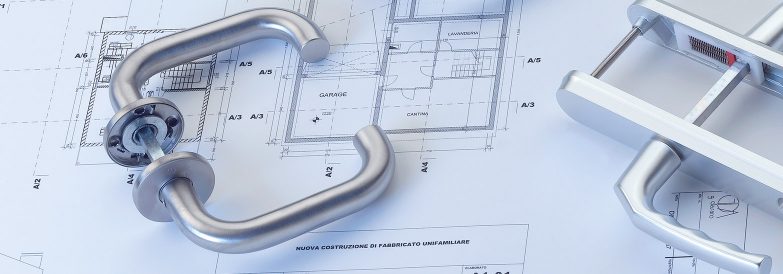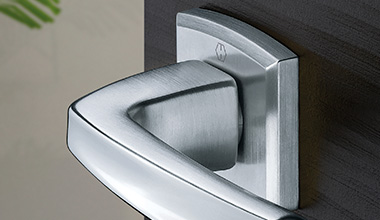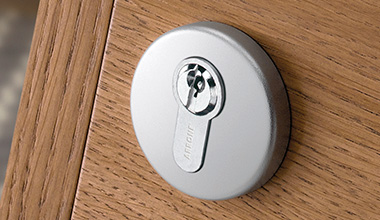BS EN 1906

BS EN 1906:2012 – Lever Handle and Knob Furniture
BS EN 1906:2012 classifies door furniture by using an 8-digit coding system. A similar classification applies to all building hardware product standards so that complementary items of hardware can be specified to, for instance, a common level of corrosion resistance, category of use, etc. Each digit refers to a particular feature of the product measured against the standard’s performance requirements.
Digit 1 – Category of use
Four grades are identified:
Grade 1: medium frequency of use with a high incentive to exercise care and a small chance of misuse, e.g. internal residential doors
Grade 2: medium frequency of use by people with some incentive to exercise care but where there is some chance of misuse, e.g. internal office doors
Grade 3: high frequency of use by public or others with little incentive to exercise care and with a high chance of misuse, e.g. public office doors
Grade 4: high frequency of use on doors which are subject to frequent violent use, e.g. football stadiums, oil rigs, barracks, public toilets, etc.
Digit 2 – Durability
Two grades of durability are identified:
Grade 6: medium use – 100,000 cycles
Grade 7: high use – 200,000 cycles
The tests undertaken to achieve these grades involve the application of additional forces to the door furniture in order to simulate the conditions of use likely to be experienced in the field.
Digit 3 – Test door mass/size
No requirement
Digit 4 – Suitability for use on fire/smoke doors
Two grades of fire resistance are identified:
Grade 0: not approved for use on fire/smoke door assemblies
Grade 1: suitable for use on fire/smoke door assemblies
Digit 5 – Safety
Two grades of safety are identified:
Grade 0: normal use
Grade 1: safety application – to qualify for this grade, handles must have high strength handle-to-plate and plate-to-door fixing and/or handle-to-spindle fixing, such that they would withstand a person grabbing in order to prevent falling. It is recommended that only Safety Grade 1 furniture is used at the top of cellar steps or other staircases.
Digit 6 – Corrosion resistance
Five grades are identified according to BS EN 1670:
Grade 0: no defined corrosion resistance
Grade 1: mild resistance – minimum requirement for internal use
Grade 2: moderate resistance
Grade 3: high resistance – minimum requirement for external use
Grade 4: very high resistance – recommended for use in exposed marine atmospheres or very polluted industrial environments
Note: Products intended to develop a natural patina (such as bronze or brass) are not required to comply with any requirements.
Digit 7 – Security
Four grades are identified:
Grade 0: not approved for use on burglary resistant doors
Grade 1: mild burglary resistance
Grade 2: moderate burglary resistance
Grade 3: high burglary resistance
Grade 4: extra high burglary resistance
Note: The main requirements include resistance to drilling, close fitting plates or escutcheons to help protect the lock and support the cylinder. They must be resistant to removal from the outside of the door and make provision to minimise the cylinder projection to a maximum of 3 mm. Full details of the requirements can be found in BS EN 1906:2012.
Digit 8 – Type of operation
Three operation types are identified:
Type A: spring assisted furniture
Type B: spring loaded furniture
Type U: unsprung furniture
Door Finger Protector
A product specifically designed to protect against injury caused by trapped fingers in the hinge stile of a closing door. The number of cases involving medical intervention runs to tens of thousands per year with the youngest children most vulnerable.
Sources:
Door and Hardware Federation (DHF) Best Practise Guide – Lever handles and knob furniture to BS EN 1906




